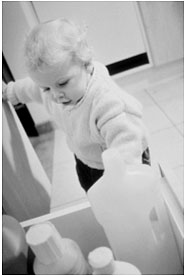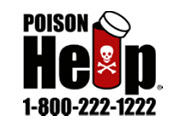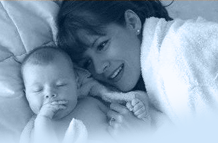Infant poison prevention tips |
Baby Proofing Directory
>
Misc.
Toddler Safety Tips >
Poison
Prevention >
Poisons can be a major threat to your little ones health, and
there are so many hazards in your home. Luckily, if you have
followed the tips at the beginning of the book, and placed hazardous
materials up high and under lock and key- the legwork is already
done. If you haven’t done so already, do a walkthrough
of your home looking for medications, vitamins, etc that could
fall into little hands
Even vitamins can be harmful if ingested, so everything should
be kept under lock and key. When you fill prescriptions at the
drug store, ask for child safe bottles for added security. Don’t
rely on them however, because as your child gets older they
will be able to figure the bottles out!
|
 Here
are some tips to get you started: Here
are some tips to get you started:
1. Always have the poison control number posted for easy reference.
Most parents will have it by every phone and on the fridge as
well. When panic strikes you may not be thinking clearly and
you want to make the call as soon as possible. If you call your
local poison center (which should be listed in the yellow pages)
they may be able to provide you with stickers and magnets to
put in your home. They should be similar to the graphic below.
Whenever you leave your child with a babysitter or grandparent,
make sure that they are aware of the number as well.
 |
When you do call the poison hotline, they will want to know
certain information. This includes: child’s condition,
age, weight, product ingested, time that the poisoning occurred,
your name and phone number. The center will then give you
instructions on what to do next.
2. While any product can be harmful if ingested the following
is a short list of those that are the most common:
a. Medications- including those that contain iron
b. Children’s vitamins
c. Cleaning products
d. Drain openers
e. Toilet bowl cleaners
f. Rust removers
h. Windshield washer solution
i. Furniture polish
j. Lighter fluid, lamp oil, kerosene
k. Paint thinner
l. Pesticides
3. Be prepared! The following should always be under lock
and key, and only use them if instructed to by the poison
control center.
a. Syrup of Ipecac- this will usually induce vomiting within
30 minutes of ingestion
b. Activated charcoal- this will absorb the poison. Some officials
think that it is less palatable for children, so discuss this
with your health professional.
c. Plenty of water
4. Don’t trust the package details. Many times they
will be wrong. Also never make your child vomit unless directed
by the poison control center. Certain products will actually
do more harm when vomited.
5. Never treat an unconscious child- let the professionals
handle it.
6. Begin to teach your child early the dangers of cleaning
supplies and medications. Small children confuse medication
with candy so it is important that you begin the education
process early.
|

